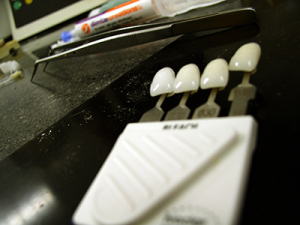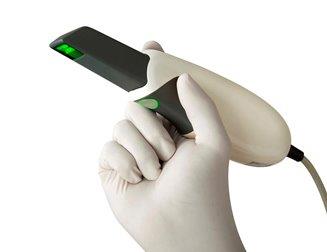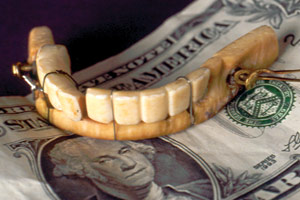Full mouth reconstruction is a cosmetic dentistry procedure intended to rebuild and restore many parts of the mouth, including the teeth, upper and lower jaws. It is often referred to as a rehabilitation. This type of procedure is considered to be a very extensive process, often requiring multiple stages. Depending on the needs of the specific case, it may take months, or in some cases, even years to complete. However, given the level of impact and benefit this procedure can have, it’s no wonder it is considered to be one of the biggest challenges in dental lab work. When completed, it will help restore full oral functions, as well as help in enhancing the health and beauty of the person’s smile.
How is full mouth reconstruction done?
As mentioned earlier, a reconstruction of the mouth is a complex, multi-step procedure. Depending on the amount of damage sustained, the number of procedures needed to be done may vary. While slight variations may arise between different dental offices and the dental labs they work with, most of the major stages within the process remain constant across providers. Here are just some of the steps done in completing a full mouth rehabilitation.
Tooth restoration
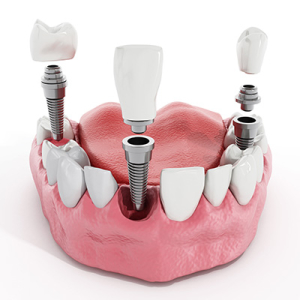 The teeth are the most obvious parts of the mouth to be restored. Depending on the extent of the damage, multiple teeth (sometimes a complete set) are required to be restored. Reconstructive procedures such as veneers, crowns, bridges, root canals, and implants may also be used. The level of restoration generally depends on the number of teeth involved and the extent of the damage.
The teeth are the most obvious parts of the mouth to be restored. Depending on the extent of the damage, multiple teeth (sometimes a complete set) are required to be restored. Reconstructive procedures such as veneers, crowns, bridges, root canals, and implants may also be used. The level of restoration generally depends on the number of teeth involved and the extent of the damage.
Gum restoration
Healthy gums are the foundation where your teeth stand, and in most restoration cases, the gums also need to be restored in conjunction with the teeth, especially if the damage was extensive (as in trauma cases and infections). Different procedures may be performed, including cleaning, debridement of damaged tissue, and grafting of bone or soft tissue.
Jaw restoration
A functional jaw is a must for a healthy mouth. Even the most public figures wouldn’t trade a beautiful smile if it meant losing functionality. A functional jaw makes it possible for you to have a stable bite, which is essential for painless movement, proper tooth function, and better speech. This is also essential for preventing unnecessary wear and tear on your teeth. Among the parts of your jaw that can be subjected to restoration are the maxilla (upper jaw), mandible (lower jaw), temporomandibular joints, and jaw muscles.
Aesthetic repair
A successful restoration also ensures that the mouth is not only healthy and fully functional, but also meets am exceptional standard of aesthetics and appeal. In fact, this is considered as a major factor for evaluating the success of this entire procedure. Think beautiful shiny sports car on the showroom floor. The teeth have to be the right color, shape, size, and proportion. Also, the other parts of the mouth should fit the entire profile of their face, regardless of which angle they would be looked at. In an extensive surgery such as this, the aesthetics should look natural and impeccable at the same time.
Who Completes Full Mouth Rehabilitation?
Given the multi-step nature of a full mouth rehabilitation, multiple health professionals may be involved in getting this done. It all starts with your dentist. He will make a prior evaluation of your oral health to determine what procedures you might need. Different evaluation procedures are used to do this: an oral inspection, evaluation of dental records, imaging techniques such as x-rays, and an evaluation of your bite. From there, your dentist will determine if you should be a candidate for restoration or if you can opt for a less extensive procedure.
If you are deemed to be a candidate for mouth rehabilitation, different specialists can be called to perform all steps necessary to complete the process. A periodontist specializes in treating diseases of the supporting structures of the teeth such as gums. An orthodontist specializes in correcting the alignment of both the teeth and jaws. An oral surgeon specializes in performing different kinds of surgical procedures in the mouth.
Other specialists can also pitch in depending on the situation. Given that each case is unique, one operation may significantly differ from the other. Ultimately, it’s all about getting the mouth fixed the right way.
When is this procedure recommended?
As it is among the most complex of all dental procedures, most dentists who are looking out for the best interests of their patients, will only do full mouth restoration when it is necessary and no other viable treatment options are available. As much as possible, more conservative treatments are recommended for the patient because of the sheer complexity of performing the restoration. However, there are situations when the only procedure that will bring the patient back to good oral health is a full mouth restoration. Here are some examples of situations when such an operation is the recommended course of action.
Trauma
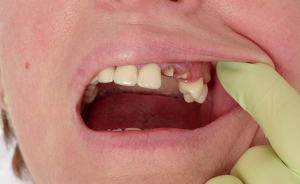 This is one of the more common causes of emergency restoration that I have encountered. Victims of either accidents or foul play may come in with broken teeth and jaw, with delay of treatment either causing death, disability, or deformity. Depending on the severity, the patient may go for reconstruction immediately or after further evaluation. With the help of these procedures, patients can have their mouth’s form and function back in its pre-trauma state.
This is one of the more common causes of emergency restoration that I have encountered. Victims of either accidents or foul play may come in with broken teeth and jaw, with delay of treatment either causing death, disability, or deformity. Depending on the severity, the patient may go for reconstruction immediately or after further evaluation. With the help of these procedures, patients can have their mouth’s form and function back in its pre-trauma state.
Oral Disease
Different kinds of oral diseases can cause damage to the teeth and its surrounding structures. When left unchecked, it can cause structural damage to all or parts of the oral cavity. Common oral diseases that may require oral reconstruction as part of treatment include severe periodontitis, tooth infection, and oral tumors. Reconstruction helps in the treatment of the disease and aids in the recovery of the patient.
Severe Tooth Erosion
For different reasons, a person’s tooth can become severely eroded. Causes include severe malocclusion and chronic vomiting (for example, in bulimics). Severe erosion can destroy the teeth to the point that the patient becomes virtually toothless. Not only that, associated structures may also be damaged as well. Reconstruction can help in correcting the problem and/or restoring the patient’s oral function.
Jaw Pain
A person may experience pain in their jaw for many reasons. It can be caused by misalignment of either the upper or lower jaw, damage in the temporomandibular joint, or problems in the muscular structure of the jaw. Rehabilitative treatment can be extremely helpful in these cases and more often than not effectively resolves the patient’s jaw pain.
Is a Smile Makeover the Same Thing?
 There are many cases when people mistake a full mouth reconstruction with a smile makeover. This is because the operations involved in both procedures are quite similar to each other. Aside from the techniques, both procedures also involve highly-trained professionals and prioritizes the patient’s long term oral health. However, there is one crucial difference between these 2 operations. A full mouth rehabilitation is given to the patient because it is deemed necessary (example: an emergency situation or a severe clinical condition). Meanwhile, a smile makeover is mainly an elective procedure that’s done because the patient simply wants to have their mouth reconstructed.
There are many cases when people mistake a full mouth reconstruction with a smile makeover. This is because the operations involved in both procedures are quite similar to each other. Aside from the techniques, both procedures also involve highly-trained professionals and prioritizes the patient’s long term oral health. However, there is one crucial difference between these 2 operations. A full mouth rehabilitation is given to the patient because it is deemed necessary (example: an emergency situation or a severe clinical condition). Meanwhile, a smile makeover is mainly an elective procedure that’s done because the patient simply wants to have their mouth reconstructed.
While this may seem like a simple difference, in reality, drawing the line between these 2 operations is quite difficult. This is primarily because of the increased popularity of cosmetic operations. In fact, some people would undergo a smile makeover under the guise of a restoration. However, the emergence of the cosmetic surgery scene has highly benefited those who are undergoing oral restorations, because techniques derived from smile makeovers (provided that they are executed correctly) made restorations look more realistic than ever before. This overlap has benefitted both types of operations.
How much it will cost?
Given the complex nature of these operations, you can expect that availing of these operations can be costly. Of course, the price you’re projected to pay for a full mouth rehabilitation may differ in a case to case basis. The minimum cost of a restoration can range from $800 to $1,500. Of course, the more extensive the operation needed to fix your mouth, the higher the cost that you’ll have to pay. The most comprehensive total restorations, complete with multiple procedures involving multiple teeth and oral components, can cost anywhere from $30,000 to $45,000.
Such is the hefty price to pay to have your mouth professionally fixed. Should you really need the operation, you have some options available that may help make the costs a little more bearable. Depending on the coverage of a specific plan, dental insurance can help in covering some (if not all) of the operations indicated in your restoration plan. There are also financing programs available like loans and installment plans to soften the financial hit.
If you find yourself or a loved one ever in need of a full mouth restoration. First consult your primary dental care professional. They will be able to run a complete exam and analysis to determine how much restoration is needed and how to proceed through the process. As mentioned above, it may require multiple professionals working together as a team, but rest assured everyone working on the case, from the dental technicians to the surgeons and dentists only have the best interest of the patient at heart. By the end you’ll be all smiles.

